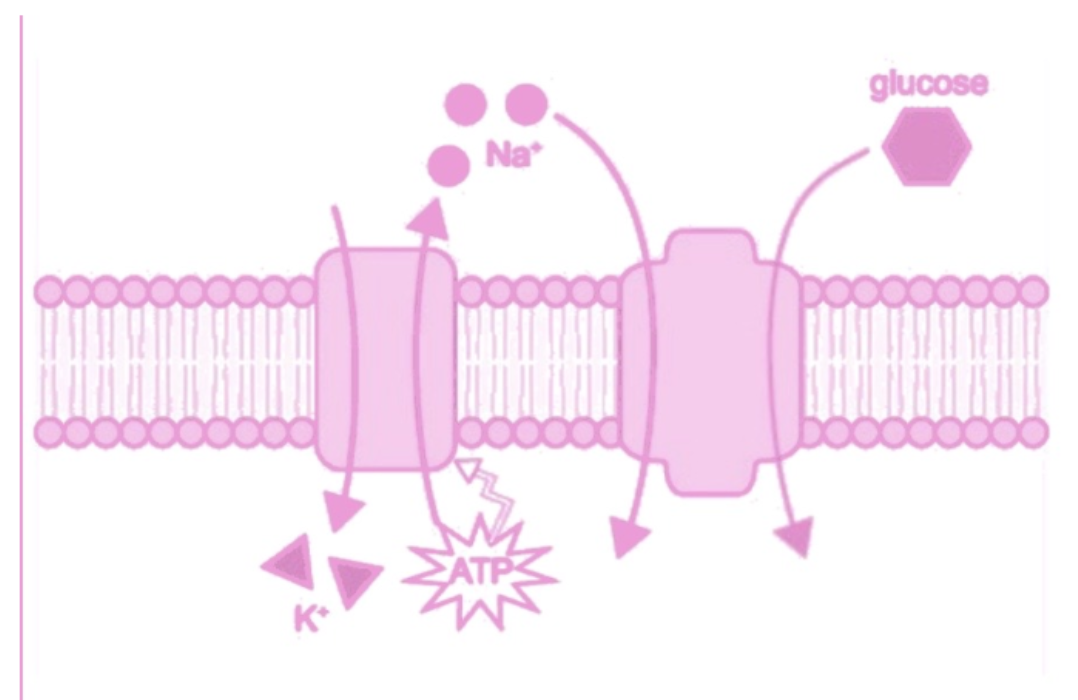Membrane Proteins
0.0(0)
0.0(0)
Card Sorting
1/29
Earn XP
Description and Tags
Study Analytics
Name | Mastery | Learn | Test | Matching | Spaced |
|---|
No study sessions yet.
30 Terms
1
New cards
What does the fluid mosaic model describe?
The structure of the plasma membrane.
2
New cards
What are membranes comprised of?
A bilayer of phospholipid molecules and a patchwork of protein molecules.
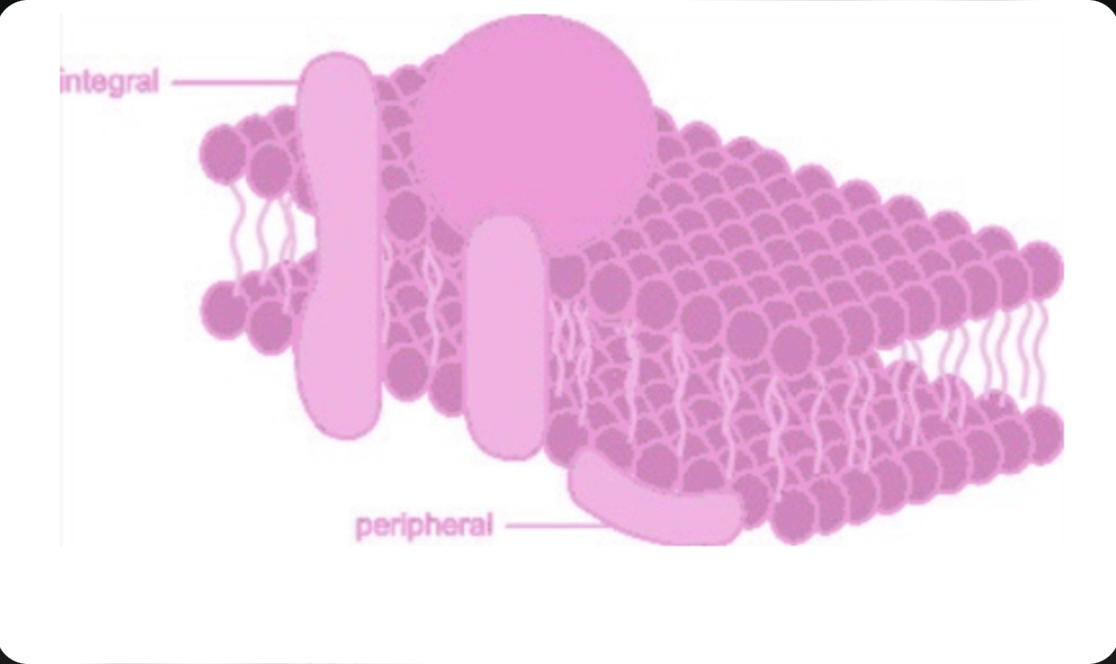
3
New cards
Describe the phospholipid molecules in the membrane.
The head region is charged and hydrophilic, the tail region is uncharged, non-polar and hydrophobic. The phospholipids are constantly changing position giving the membrane its fluid quality.
4
New cards
How can membrane proteins be classed?
As integral or peripheral.
5
New cards
How are integral membrane proteins held firmly in place within the membrane?
By strong hydrophobic interactions. Regions of hydrophobic R groups (of membrane phospholipids) allow these interactions, holding integral membrane proteins within the phospholipid bilayer.
6
New cards
What are transmembrane proteins?
Integral membrane proteins that span the entire width of the membrane. Although all transmembrane proteins are integral membrane proteins, not all integral membrane proteins are transmembrane proteins.
7
New cards
Describe peripheral membrane proteins.
* hydrophilic R groups on surface
* bound to the surface of membranes (mainly by ionic and hydrogen bond interactions)
* many interact with the surfaces of integral membrane proteins
* bound to the surface of membranes (mainly by ionic and hydrogen bond interactions)
* many interact with the surfaces of integral membrane proteins
8
New cards
How can some small molecules pass through the phospholipid bilayer?
by simple diffusion eg. oxygen and carbon dioxide
9
New cards
What do most molecules require to enter or exit the cell?
Membrane proteins.
10
New cards
What is facilitated diffusion?
The passive transport of substances across the membrane through specific transmembrane proteins.
11
New cards
How do different cell types perform specialised functions?
Since they have different channel and transporter proteins.
12
New cards
What are channel proteins?
Channels are multi-subunit proteins with the subunits arranged to form water-filled pores that extend across the membrane.
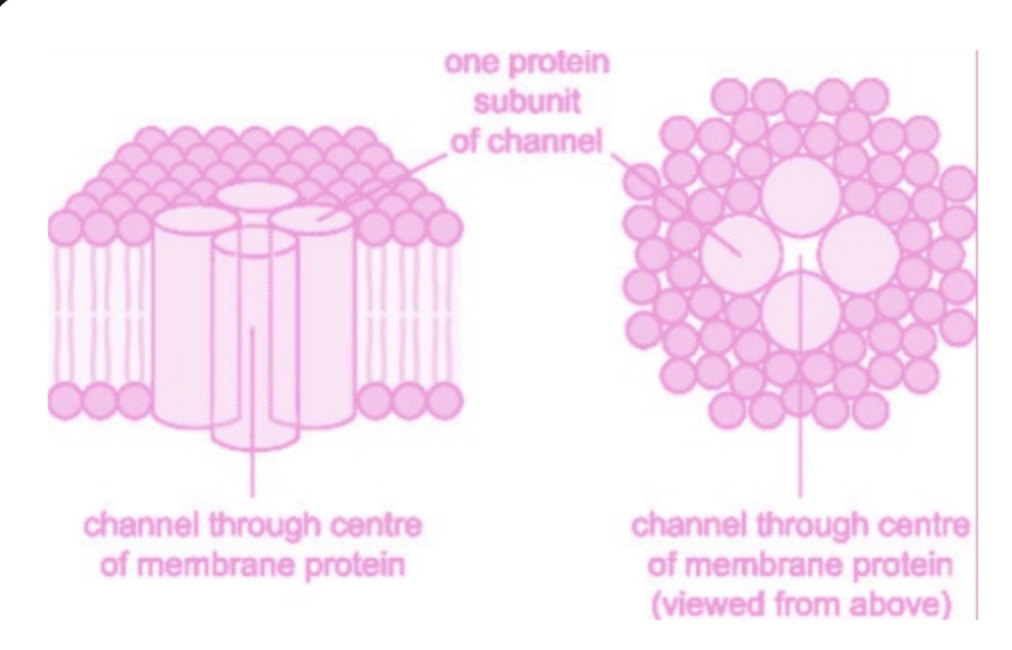
13
New cards
What are most channel proteins in animal and plant cells?
Highly selective.
14
New cards
Why are some channel proteins gated? How does this work?
They change conformation to allow or prevent diffusion.
15
New cards
What are gated channels? What may their stimulus be?
Channels that open or close in response to a chemical or electrical stimulus.
16
New cards
What are ligand-gated channels controlled by?
The binding of signal molecules.
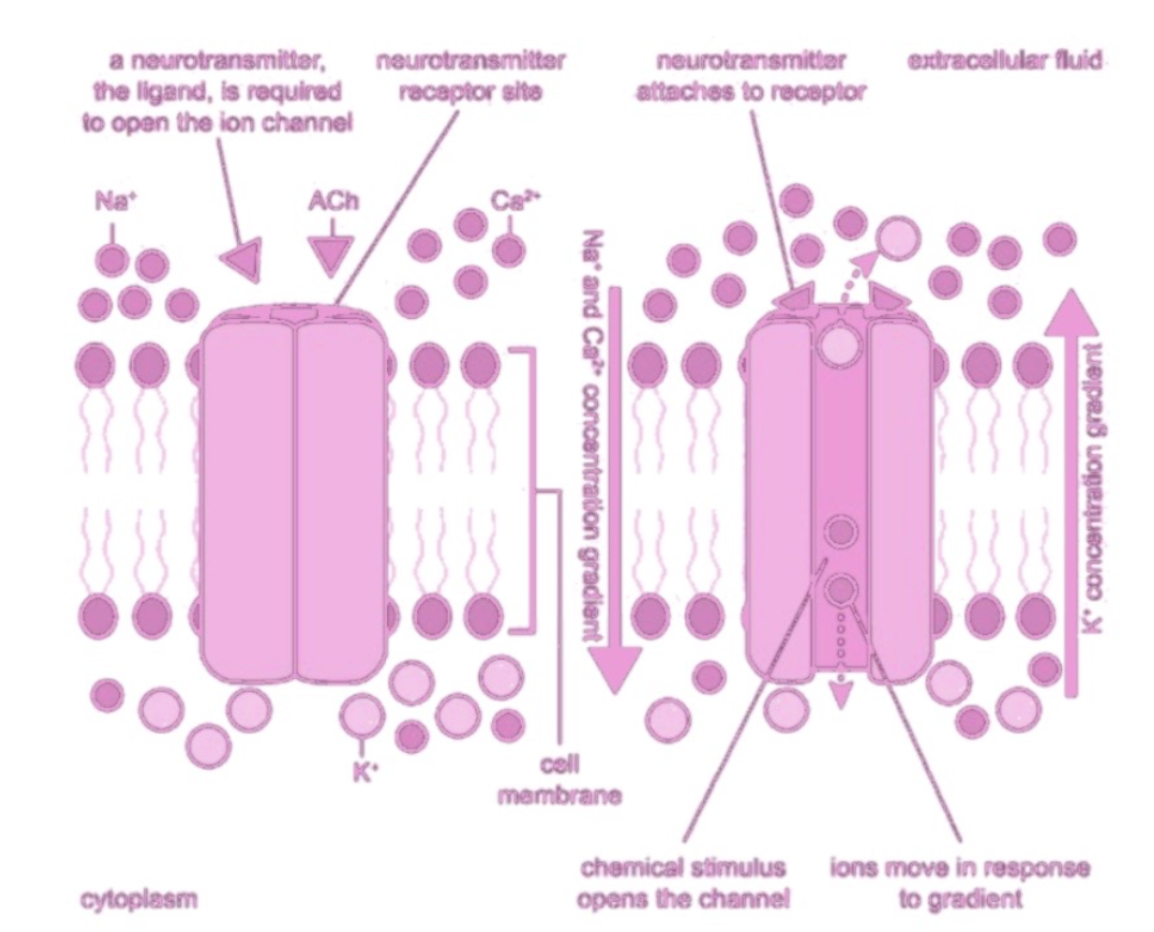
17
New cards
What are voltage-gated channels controlled by?
Changes in ion concentration.
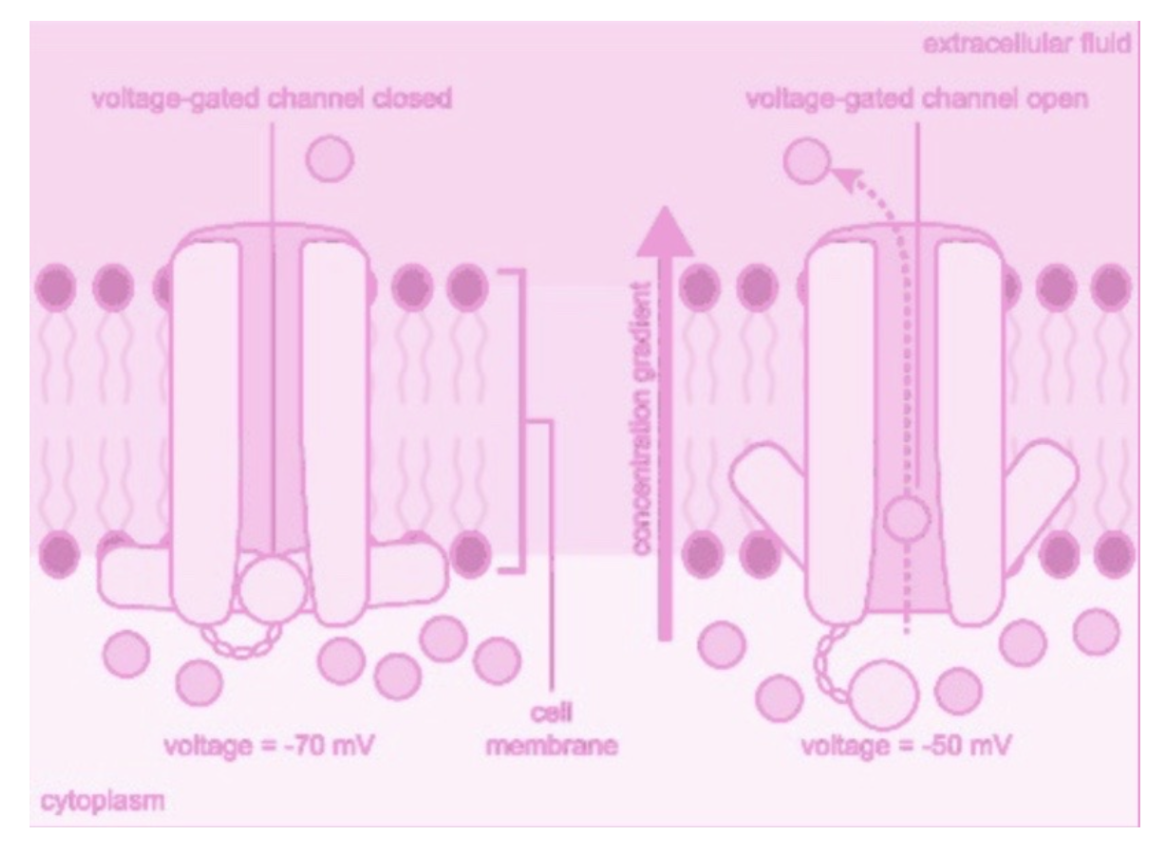
18
New cards
How do transporter proteins work?
* They bind to the specific substance to be transported and undergo a conformational change to transfer the solute across the membrane.
* The transporters alternate between two conformations so that the binding site for a solute is sequentially exposed on one side of the bilayer, then the other- allowing the solute to move into or out of the cell.
* The transporters alternate between two conformations so that the binding site for a solute is sequentially exposed on one side of the bilayer, then the other- allowing the solute to move into or out of the cell.
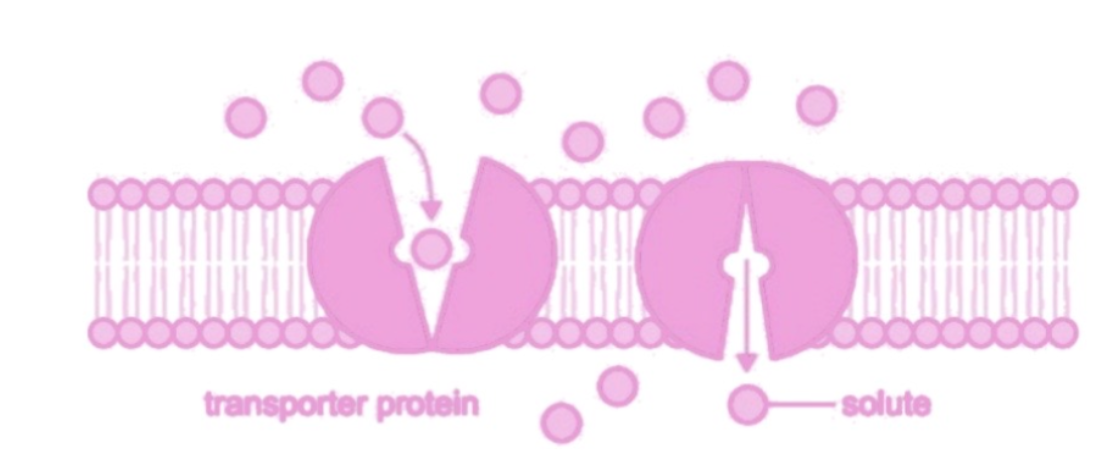
19
New cards
What does active transport use?
Pump proteins that transfer substances across the membrane against their concentration gradient.
20
New cards
What is required for active transport? How do they provide this?
* A source of metabolic energy.
* Some active transport proteins hydrolyse ATP directly (ATPases hydrolyse ATP) to provide the energy for the conformational change required to move substances across the membrane.
* Some active transport proteins hydrolyse ATP directly (ATPases hydrolyse ATP) to provide the energy for the conformational change required to move substances across the membrane.
21
New cards
What are pumps that mediate active transport?
Transporter proteins coupled to an energy source.
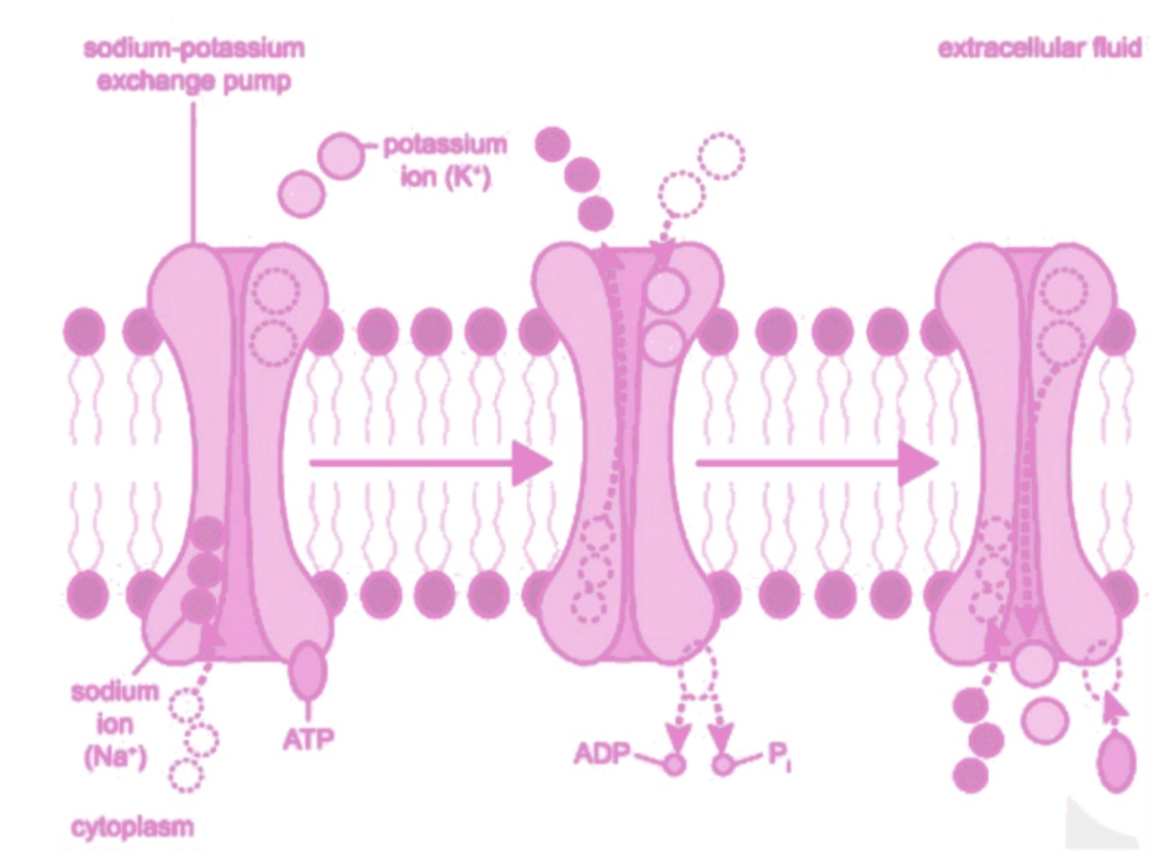
22
New cards
What determines the transport of a solute carrying a net charge?
The concentration gradient and the electrical potential difference combine to form the electrochemical gradient that determines this.
23
New cards
What is a membrane potential? When is it created?
* An electrical potential difference.
* When there is a difference in electrical charge on the two sides of the membrane.
* When there is a difference in electrical charge on the two sides of the membrane.
24
New cards
How do ion pumps establish and maintain ion gradients?
They use energy from the hydrolysis of ATP.
25
New cards
What does the sodium-potassium pump do?
It transports ions against a steep concentration gradient using energy directly from ATP hydrolysis, actively transporting sodium ions out of the cell and potassium ions into the cell.
26
New cards
Describe how the sodium-potassium pump works.
1. Pump has high affinity for sodium ions inside the cell
2. Binding occurs
3. Phosphorylation by ATP
4. Conformation changes
5. Affinity for sodium ions decreases
6. Sodium ions released outside of the cell
\
7. Potassium ions outside the cell bind to pump
8. Dephosphorylation occurs
9. Conformation changes
10. Potassium ions taken into cell
11. Affinity returns to start
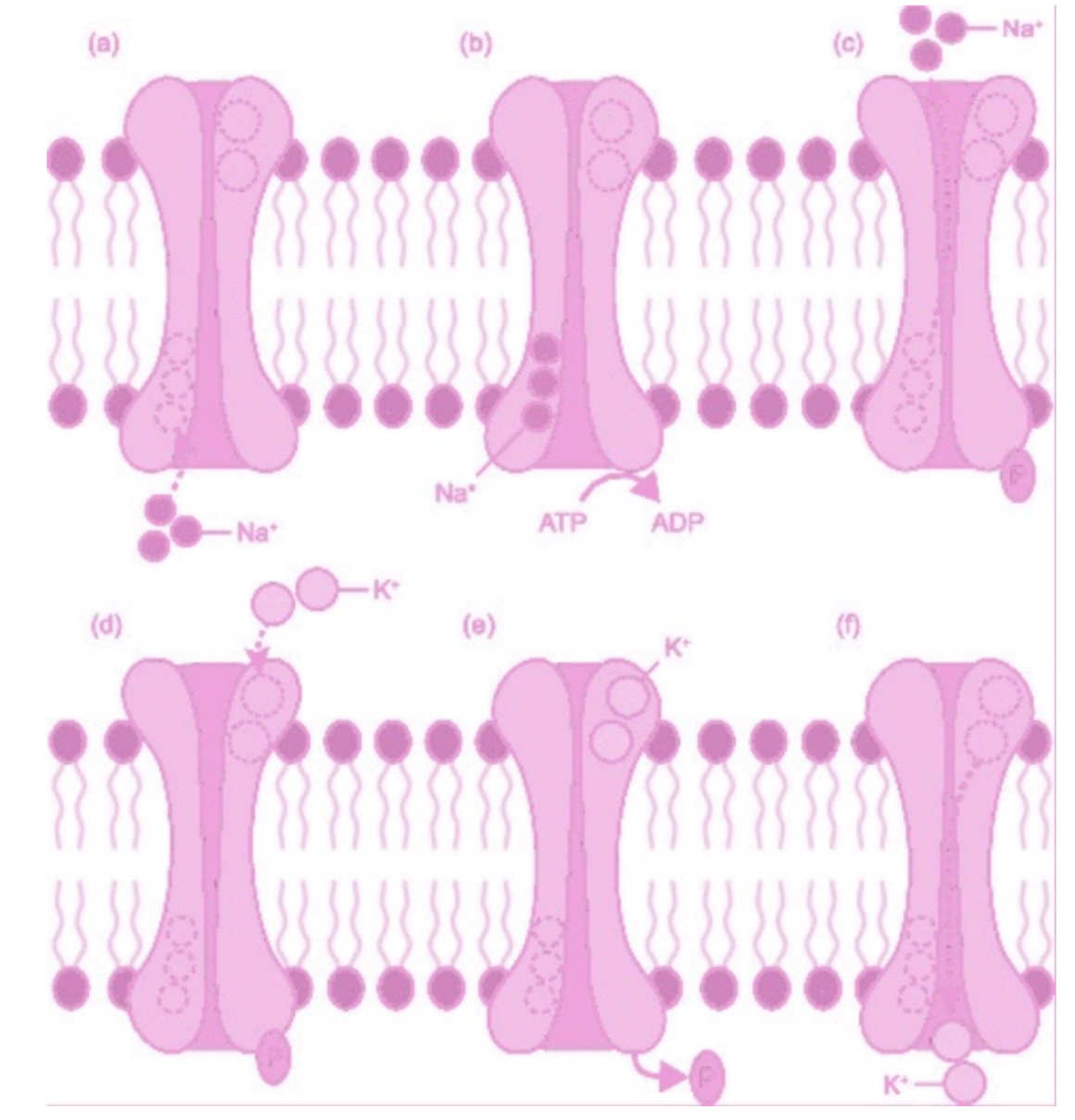
27
New cards
In a sodium-potassium pump, how many sodium and potassium ions are transported for each ATP hydrolysed? What does this establish?
* three sodium ions out
* two potassium ions in
* establishes both concentration gradients and an electrical gradient
* two potassium ions in
* establishes both concentration gradients and an electrical gradient
28
New cards
Where is the sodium-potassium pump found? What does it account for?
* in most animal cells
* a high proportion of the basal metabolic rate in many organisms
* a high proportion of the basal metabolic rate in many organisms
29
New cards
How is glucose absorbed from the small intestine into the bloodstream?
In intestinal epithelial cells (small intestine), the sodium-potassium pump generates a sodium ion gradient across the plasma membrane, driving the active transport of glucose.
30
New cards
Describe the glucose symport.
Sodium ions enter the cell down their concentration gradient. The glucose transporter (responsible for this glucose symport) transports the sodium ions and glucose simultaneously in the same direction. The transport of glucose into the cell is against its concentration gradien
